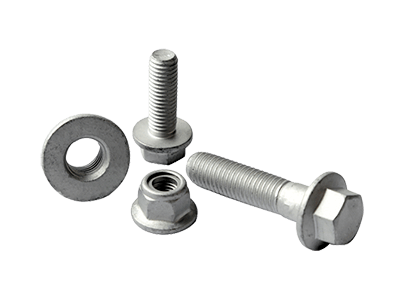Post-race wheel checks
NASCAR® racing is miles more intense than normal driving. And that’s not just the emotional rollercoaster the audience experiences as world-class drivers speed around the track. It’s also much more intense for the components used in the racing cars themselves.
Intensive racing, intensive testing
The wheels are thoroughly checked after every race. This includes: wheel alignment, camber, caster, toe and tyre wear.
Wheel alignment
Adjusting the angles of the wheels so that they are correctly aligned ensures excellent road handling during a race. It also reduces undue wear on the tyres and the steering and suspension parts so that all components perform optimally at high speed.
Wheel alignment issues tend to crop up after an impact. While this usually involves a pothole or a curb for a private vehicle, in a NASCAR® race this tends to be the result of a collision with another vehicle. That’s why it’s best to check and adjust wheel alignment after every race.
Camber, caster and toe
All four wheels need to be aligned consistently and optimised for maximum contact with the road surface. However, there is some discussion about how the wheels should be oriented – camber, caster and toe – for NASCAR® driving in general and how to adapt this for each of the NASCAR® tracks. The camber, caster and toe are checked and adjusted pre- and post-race to ensure the ideal combination for the next circuit.
- Camber: negative camber is increasingly popular, especially for aggressive driving for increased grip during heavy cornering. This is perfect for NASCAR® races with few straight tracks. Zero camber results in even more wear of tyres, but doesn’t perform as well around corners.
- Caster: positive caster helps stabilise the vehicle at high speeds, increasing tyre lean when cornering and increasing steering efforts.
- Toe: negative toe or toe-out increases cornering ability, with the inner wheel angled more aggressively into the turn. The smaller turning radius of the inner wheel, pulls the vehicle into the turn. However, this decreases straight line stability. Positive toe or toe-in is ideal for long, straight driving with few or gentle turns – so not a NASCAR® race!
Tyre wear
The patterns made by unusual tyre wear can highlight potential issues or are the result of wheel alignment or orientation decisions made to improve the driving experience during the race. For example, after a NASCAR® race it’s common to replace tyres due to feathering on a tyre (as a result of toe decisions) or one-sided wear (thanks to negative camber orientation).
Other unusual tyre patterns include either centre or edge wear of the tyres which is the result of overinflating or underinflating them. Cup wear, when scalloped dips appear on one edge of the tyre tread, is a sign of worn out or bent suspension parts and requires further investigation.
Visit MOOG TV to discover more about wheel alignment
Quality replacement parts
It’s not just racing cars that need high quality parts. Regular road going vehicles can also benefit too. MOOG® offers a complete range of easy to install, premium quality, long-lasting components that are engineered, manufactured, tested and validated to OEM standards for optimal performance.
RELATED ARTICLES
Flanged and zinc flake coated nuts, synthetic grease and metal sealing rings
